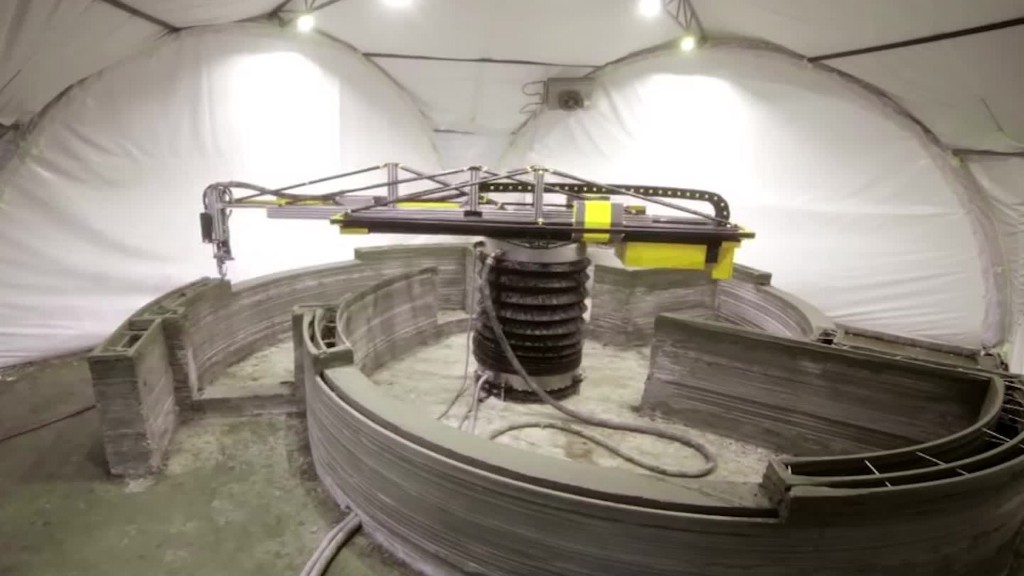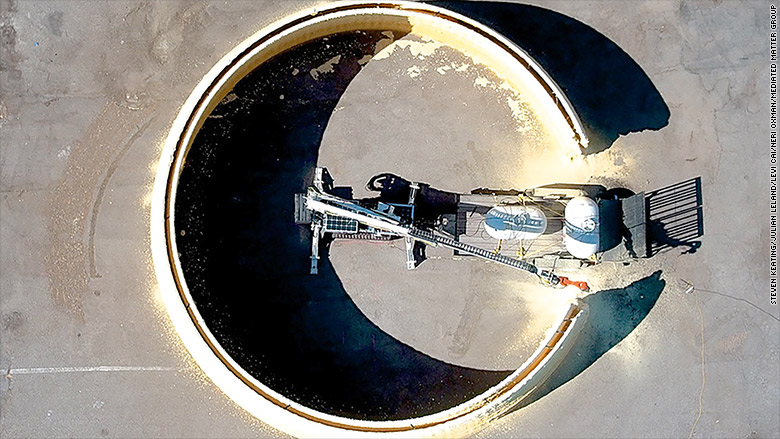
A giant robot can now 3D print a building.
Researchers from the Massachusetts Institute of Technology have created a robotic system that built the basic structure of a building in less than 14 hours. The dome-like structure is 50 feet in diameter and 12 feet high.
The prototype is essentially a vehicle with a large industrial robotic arm for reach, and a smaller arm for dexterity. Different tools can be attached to the smaller arm, such as a welding system or a spray head that shoots out building materials like foam.
"With this process, we can replace one of the key parts of making a building, right now. It could be integrated into a building site tomorrow," said Steven Keating, co-author of a paper published in the journal "Science Robotics."
Related: A Formula 1 team is 3D printing race car parts
The technology could allow for faster, cheaper and more adaptable building construction compared to traditional methods, according to the researchers. Unlike other 3D printing systems, their free-moving design can create an object of any size.

MIT's system -- called "Digital Construction Platform" -- is intended to be self-sufficient, but right now it requires humans to monitor it for safety reasons. In the test, the researchers programmed the prototype to create a dome and used a spray foam commonly used in buildings and homes. The whole system can be powered electrically or with solar panels.
The 3D printing industry has been growing in recent years. In February, startup Apis Cor announced it built a 400-square-foot house in Russia, using about $10,000 worth of materials and a 3D-printing robot. In 2015, Oak Ridge National Laboratory 3D printed a mobile home, and a 3D-printed backyard castle was built in Minnesota the prior year.
Related: Adidas unveils new 3D printed shoe
The MIT researchers want to deploy their system in remote regions, such as in the developing world or in disaster relief areas, for example after a major earthquake, to provide shelter quickly. But that could be five to 10 years away, Keating, the paper co-author, told CNNTech.
The long-term vision is for the system to work in places such as Antarctica, the moon and Mars to make buildings out of local materials like ice or moon dust. Keating declined to give a specific timeline, but he said technology like this could be ready in 50 years or sooner.

